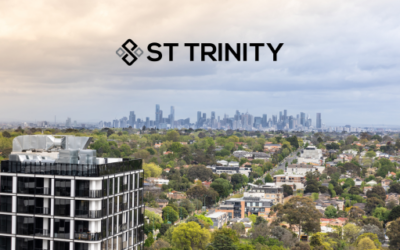In a pivotal announcement, Treasurer Jim Chalmers will unveil projections for a surplus of $9.3 billion in the upcoming 2024-25 federal budget Australia. This marks a significant milestone, representing the first consecutive surplus since the global financial crisis in 2007-08.
The year’s Australia federal budget 2024 shows a $10.5 billion improvement from the December mid-year economic update, but projections indicate that deficits will worsen over the following two years.
Chalmers emphasised the government’s commitment to responsible economic management.

Table of Contents
Navigating Economic Responsibility: Balancing Relief and Stability in the Federal Budget Australia
Despite pandemic challenges and inflation concerns, the budget aims to take cost-of-living measures to provide relief for struggling households without exacerbating inflation. Achieving this balance requires careful planning and consideration of economic factors to support vulnerable populations without risking economic instability through policies that could fuel inflation while avoiding economic instability.
Chalmers indicated that measures taken by the Australian government to provide the necessary relief to Australian families may include extending the energy price relief. However, some independent estimates suggest a potentially higher surplus indicating a cautious approach from the government as inflation remains untamed.
Some independent estimates suggest a potentially higher surplus, showing a cautious approach from the government as inflation remains uncontrolled.
Addressing Deficits and Prioritizing Growth In 2024 Federal Budget Australia
While celebrating the surplus in this year’s Federal Budget Australia, Chalmers also acknowledged projected deficits in the following years, attributing them to unavoidable spending on critical areas such as healthcare, infrastructure, and pandemic response efforts.

The federal budget 2024 Australia underscores the government’s commitment to investing in Medicare, the health system, jobs, skills, infrastructure, housing, and social care, aiming to pave the way for a prosperous future.
Notably, the university sector anticipates changes, including potential adjustments to international student visa application fees, signalling a broader strategy to bolster investments in education and research.
What’s Next?
Despite the positive outlook, Chalmers and Finance Minister Katy Gallagher emphasised the ongoing need for budget discipline, highlighting the government’s efforts to find savings and reprioritise spending to meet essential service demands.
As of now, it is clear that navigating economic challenges while ensuring sustainable growth and prosperity remains a top priority for the Australian government.
Key Takeaways from The 2024-25 Federal Budget Australia

The budget allocates an additional $6.2 billion to housing initiatives, bringing the total new investment since 2022 to $32 billion. This funding builds upon existing efforts under the National Housing Accord, Housing Australia Future Fund, and Social Housing Accelerator.
- Government Boosts Housing Infrastructure Funding by $1 Billion
The government is allocating an additional $1 billion to states and territories for new housing initiatives, for essential services that include water, electricity, sewage, and roads.
This adds to the $500 million previously pledged through the Housing Support Program to support infrastructure development for more homes.
- Government Boosts Rent Assistance to Alleviate Rental Stress
To reduce rental stress, the government is investing $1.9 billion to raise the maximum rates of Commonwealth Rent Assistance by an additional 10%. This adds to the previous 15% increase implemented in September 2023, resulting in a total increase of over 40% since May 2022, including indexation.
This means that nearly 1 million households (1/4 of all Australian renters) can now receive the maximum rate of Commonwealth Rent Assistance.

- Government-University Collaboration: Expanding Student Accommodation
The government will collaborate with the higher education sector to mandate regulations to increase student accommodation, easing pressure on the rental market.
- Boosting Social Housing: Government’s $9.3 Billion Investment Plan
The budget increases $423 million towards the new National Agreement on Social Housing and Homelessness, increasing the total to $9.3 billion.
This agreement requires the Commonwealth to double its annual funding for homelessness services to $400 million, with states and territories matching this funding.
The government also aims to increase the National Housing Infrastructure Facility by $1 billion to better assist housing for women, children experiencing domestic violence, and youth. This funding shift prioritises upfront grants to support states, territories, and community housing providers in delivering more housing for these vulnerable groups.
The focus on building and repairing social housing may present investment opportunities in this sector, as there will be a potential increase in demand for specific types of properties or land suitable for housing developments targeting these cohorts.

- Government Offers Foreign Investment Incentives for Build-to-Rent Developments
Foreign investors will now pay a lower fee for foreign investments to purchase existing Build to Rent properties. However, this permission comes with the condition that the property must continue to be used exclusively for Build to Rent purposes.
- Boosting Affordable Housing with $1.9 Billion in Discounted Loans
The government offers an extra $1.9 billion in discounted loans to community housing providers and charities to help build new affordable homes through the Housing Australia Future Fund and National Housing Accord.
Property investors can expect increased support for building affordable homes through discounted loans provided to community housing providers and charities.
Read More: CAPITAL GAINS TAX CHANGES IN 2024 FOR REAL ESTATE




